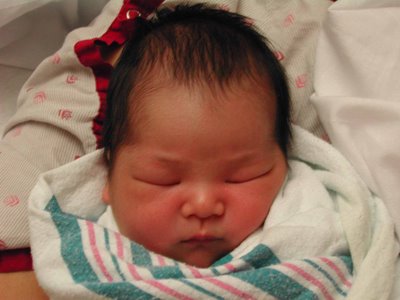I have divided my trip to Italy into three sections: "The Good", "The Bad", and "The Nude." Before you get too frightened (or excited), the last of the three refers only to some of the artwork. We begin with il buono (the good).
The English Countryside
 As I indicated in Part 1, I switched airports in London. This photograph shows the English countryside though my bus window as I rode from Gatwick to Stansted. It actually looked remarkably like Wisconsin.
As I indicated in Part 1, I switched airports in London. This photograph shows the English countryside though my bus window as I rode from Gatwick to Stansted. It actually looked remarkably like Wisconsin.
The Workshop


After the bus ride, I flew to Pisa and arrived late in the evening of the first day of the conference (Sept. 19). I missed the first day of the
workshop as a cost-saving measure. My talk was the first talk on the third day (Sept. 21).
The workshop itself was, as its title implies, about the tau lepton. The analysis on which I am working is intended to measure the frequency with which a
B meson decays into a
tau lepton and a
neutrino. Since the lepton was not the focus of my analysis, this content of this
workshop was mostly new to me.
I think
My talk went well. I had rehearsed several times and felt comfortable with the material. At the end, only one question was asked. This was an important milestone in my career; it was my first talk and an
international conference or workshop. This is an important part of beginning a reputation in the scientific community. If you are very interested, you can view the current draft of my
contribution to the proceedings of the workshop.
Lucca Lucca
Lucca is a small city near Pisa. My guidebooks consistently described it as "charming. " The workshop organizers had arranged for an excursion to
Lucca on the afternoon of the day I gave my talk. The city is know for its
medieval wall. Most cities in Italy had them, but only
Lucca's wall is still fully intact. You can see part of int in the photograph above. I took this picture while standing on top of the wall. On the left, you can see the fields of grass on the immediate exterior of the city. On the right, you can see houses that are just inside the city. On the wall itself, you can see a paved bicycle and walking trail that lets visitors traverse the wall all the way around the city. I considered taking the trail all the way around, but I did not have time. At several meters in height and thickness, the wall is still impressive centuries after it was built.

This statue of
Garibaldi is on of the landmarks described by our tour guide. Apparently, he has a statue in almost every city in Italy because he is credited with unifying the peninsula into one nation.
Below, you can see remnants of much more ancient parts of
Lucca's history. If you look closely at the photograph, you will notice that the yellow and white buildings form part of an oval. The border of this oval is where the wall of
Lucca's Roman
coliseum once stood. Now, it is a usual
piazza with shops and restaurants.


This photograph shows the outside of the
piazza; the stones sticking out of the plaster are all that remains of the
coliseum walls that stood here 2000 years ago.

The beautiful and ornate edifice above belongs to St. Michael's church in
Lucca. The small delicate columns are a defining feature of the
Pisan Romanesque style of
architecture. According to our tour guide, this was one of 50 churches that once stood in
Lucca. Some have since been converted into banks and other buildings.

This view shows the
church from the side and reveals that most of the front edifice is actually a facade. Notice the cables attached to the back of the statue of Michael; when the church was first built, these were used to flap the angel's wings to welcome pilgrims!

This photograph is of one part of another church in
Lucca; it shows the artwork above one of the main entrance doors. Here we encounter the second theme present in most o f the church art I saw in Italy. The first was opulence and
ornateness. The second is its practical goal of communicating biblical stories to a mostly illiterate population. In this case, portraits of Jesus and his disciples appear below a
rendering of his
ascension (
Luke 24:50-53)

This is a statue of
Puccini, one of Italy's most famous opera composers. It was erected in a square in
Lucca in the late 1990's. Among his works is the opera
Manon Lescaut, which I saw at the San Francisco Opera house a few weeks after my return from Italy. The singing was magnificent, but the plot was somewhat contrived. The orchestra was one of the best I have ever heard. They music was nearly flawless and matched every word and movement of the play almost perfectly.

I conclude my introduction to Luca with the most incongruous thing I saw there. One of the shops in the
piazza is shown at left. Despite this being it Italy, the sign above the shop is in English, and an American flag is for sale.












































